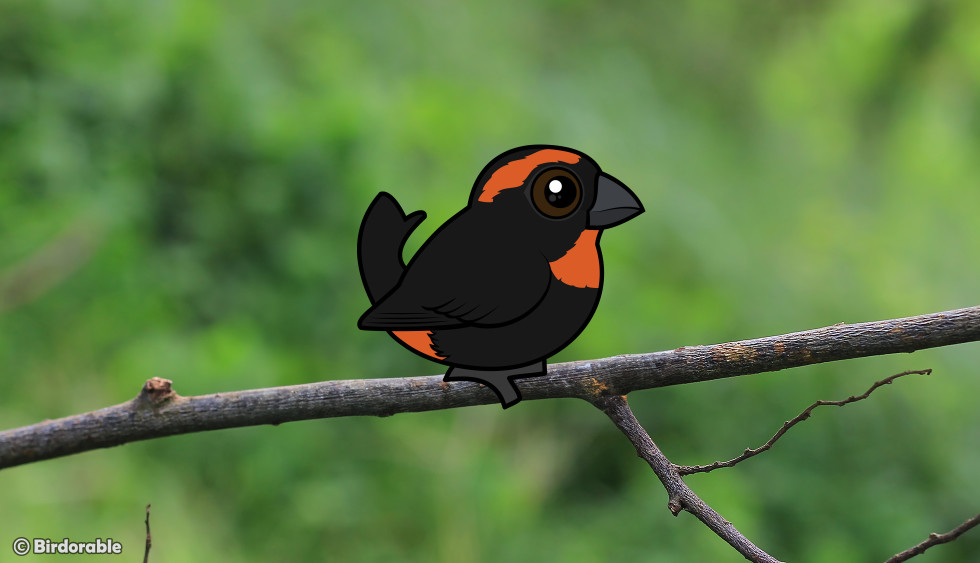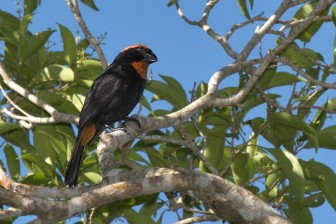Puerto Rico Week
Meet the Comeñame: Puerto Rico's Distinctive Bullfinch

The Puerto Rican Bullfinch, known locally by the common names comeñame, capacho, or carpacho, is a distinctive songbird endemic to Puerto Rico. Measuring around 7 inches in length and weighing just over one ounce, this bird is easily recognized by its bulky figure, and its striking black plumage accented with reddish-brown patches above the eyes, around the throat, and under the tail base.
Puerto Rican Bullfinches are versatile foragers, primarily consuming fruits and seeds. Approximately a third of their diet includes insects and snails, showcasing their adaptability. They forage at various levels, from the ground to the tree canopy, and can be observed feeding alone, in pairs, or within mixed-species groups.
Their preferred habitats are dense forests across Puerto Rico, excluding the island's easternmost regions. They thrive in both wet and dry forests, as well as in coffee plantations and areas with thick underbrush.

Puerto Rican Bullfinch by Cataloging Nature [CC BY 2.0]
During the breeding season, which typically spans from March to June, Puerto Rican Bullfinches construct spherical nests with side entrances, using woven plant materials and sticks, often lined with bark pieces. These nests are commonly situated in tree forks, branches, cavities, shrubs, or clumps of grass -- most often close to the ground. Females usually lay clutches of two to three light green eggs with dark markings. Notably, cooperative breeding behaviors have been observed, with juveniles assisting adults in nest-building activities.
The vocalizations of the Puerto Rican Bullfinch are prominent, consisting of a series of loud whistles followed by a high-pitched trill or buzz. They are often heard before they are seen, as they tend to sing from inconspicuous perches within dense foliage.
While currently classified as a species of "Least Concern" by the IUCN, the Puerto Rican Bullfinch faces challenges due to habitat loss and fragmentation. Conservation efforts focused on preserving Puerto Rico's forests are essential to ensure the continued survival of this unique and vibrant bird.





Comments
Be the first to comment
Thank you!